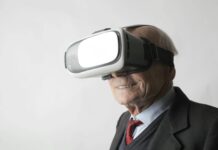It’s been around 2 months since the first lockdown was declared across the country. Many public places like shopping complexes, markets, railway stations, parks, etc. have been reopened in the wake of the declining economy and inconvenience for the public. But the risk of spreading Coronavirus its an all-time high.
So, temperature screening systems have been installed in many public areas. These systems detect the elevated temperature in individuals and flag them because fever is one of the most common symptoms of COVID-19. These systems help detect people with high temperatures and refuse their entry in public places. It results in preventing the spread of disease and assures visitors that their venues are safe.
Types of Temperature Screening Systems
There are basically two types of a temperature screening system to detect elevated temperatures – handheld infrared thermometers or ‘thermometer guns’ and radiometric thermal cameras. There are pros and cons of devices that have been installed in airports, stores, and various places across the world during the last viral outbreaks decades ago.
Handheld temperature screening systems, when used properly, can provide readings that are relatively accurate. But each person has to undergo separate screening. It is probably more significant than the time you need to have one-on-one screenings. But this process needs space between the person who is being screened and one who is screening. There are still some contact-less devices which should be held in the range of 2 to 6 inches for an accurate reading. It also has a risk of getting in contact with each other.
On the other side, thermal cameras can give readings from around 6 feet away. They indicate body temperature passively without putting an object and some systems can easily trigger visual notification or alarm when elevated reading is recorded. But there is also a downside. Cameras may not be able to detect the right temperature of moving people and due to wrong placements. Ambient temperatures can also affect readings. It may even be harder to detect temperatures if the outdoor temperature is recorded around body temperature.
FebriEye – An AI-Based Thermal Screening System that can detect high temperatures
It is a thermal screening and fever detection system which comes with more features like social distance and face mask monitoring. It is known to be the best choice for covered/indoor places like entryways, manufacturing units, public transport hubs (metro station, airports, railway stations, etc.), hotels, and buildings, shopping malls, complexes, and gated communities. It is capable of detecting facial temperature with accuracy and triggers an alarm whenever it records elevated temperature.
Key Features
- Detects forehead temperature
- Detects social distancing
- Detects people without facemask with AI
- Thermal+Vision camera
- Contact-less detection
- Easy to deploy
- Highly accurate
- Real-time alerts
How does it work?
This temperature screening system is fast, no-contact, and non-invasive. It is easy to detect the face of an individual while ignoring false triggers like hot objects (hot coffee, cell phone, etc.) and hot lights above the person. The system detects the hottest areas on the face when a person looks in front of the camera, i.e. near the eyes. This area correlates most closely with body temperature. So, it is important the person needs to remove glasses and look straight to the camera. This temperature screening monitor is the best choice for checkpoints in public places.
This monitor can easily scan for temperature and adjusts and calibrates on the basis of ambient temperature. It calibrates itself constantly for near-zero drift. It also eliminates the need for manual recalculation.
The system uses thermal cameras to detect increased body temperature of the subjects. Fever is the telltale symptom of COVID-19 and other types of viruses like Ebola and SARS. This system cannot be used for diagnosis. It is recommended to consult a healthcare specialist who uses a medical-grade thermometer for diagnosis. The system is designed only to detect increased temperature which may or may not be fever and increased temperature may not mean any disease or virus.
Read Also – Computer Monitoring Software is Beneficial For Employers in COVID 19


I am a passionate blogger and developer sharing business tips. I Help others solve programming problems on various online forums.
You must follow these marketing tactics to promote your business online.























